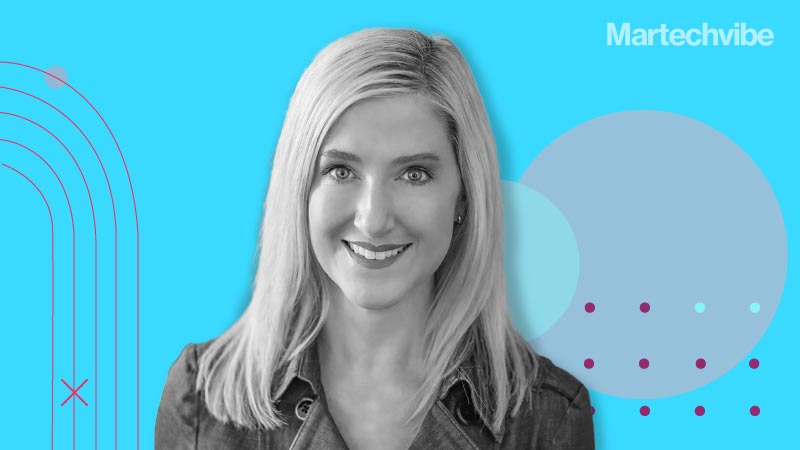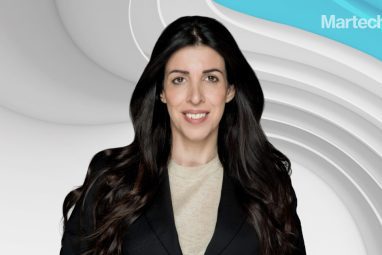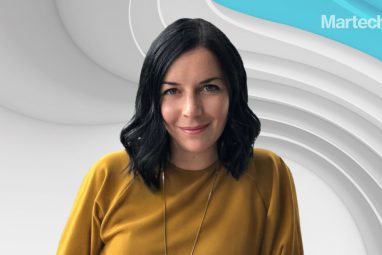Customers Expect New, Now, And Next In Every Interaction
Vice President, Customer & Market Insights, Salesforce, Karen Mangia discusses how customer changes drive technology changes. “The pandemic placed pressure on every organisation to consider how to make interactions easier, not just easy. Easy may not be a realistic outcome. Easier implies an interactive journey of constant co-creation and continuous improvement,” said Karen Mangia, Vice […]
Topics
What to Read Next
- Wiland Launches MarketSignals Custom Personas
- Parloa Secures $350M Series D, Valued at $3B to Lead Agentic AI in CX
- O3 Solutions Introduces Otto, a Personal AI Assistant for Capital Project Teams
- Infillion, Yobi Partner to Advance AI-Powered Advertising Optimisation
- VIOOH Partners with Atmosphere TV to Expand Premium DOOH Inventory

Vice President, Customer & Market Insights, Salesforce, Karen Mangia discusses how customer changes drive technology changes.
“The pandemic placed pressure on every organisation to consider how to make interactions easier, not just easy. Easy may not be a realistic outcome. Easier implies an interactive journey of constant co-creation and continuous improvement,” said Karen Mangia, Vice President, Customer & Market Insights, Salesforce.
A customer experience expert, Mangia is a WSJ bestselling author with three books under her belt, including Listen UP!: How to Tune in to Customers & Turn Down the Noise (2020). She talks about the importance of a high-performing martech stack, CX trends driving the B2B industry today, and the significance of Salesforce Customer 360.
Excerpts from the interview
How must brands re-prioritise their martech stack to stay agile?
Start by asking the big impact question I revealed in Listen Up!: How to Tune In To Customers & Turn Down the Noise. The Big Impact question is, “Who is our customer now?” The answer has changed for almost every organisation globally over the past two years. Before we consider workflow, we must understand who we serve, why we serve, and the experience we expect to deliver from that service.
Then, take a quick assessment of how many tools and applications are in your martech stack today. High-performing marketing organisations use an average of 14 tools to create a cohesive customer experience, while low performers only use an average of seven. Do you have the tools and technology in place to do the jobs that need to be done now in your organisation to serve your customers?
Customer changes drive technology changes. The latest Salesforce State of Marketing report reveals that 84 per cent of marketers surveyed said changing customer expectations is changing their digital strategies. The best approach to staying agile is regularly revisiting your priorities and adjusting your digital strategy accordingly.
What tools and strategies would you recommend brands leverage for customer behaviour insights?
Salesforce builds bridges between companies and their customers because businesses succeed when they create meaningful connections. With Customer 360, we help unite every department to better focus on customers. And with Tableau, we help companies uncover deep insights and take data-driven actions to serve their customers better.
We strive to bring out the best in one another, deliver success to our customers, and inspire the entire industry through our actions.
With the increased sustainability expectations worldwide, what challenges do you foresee?
Our planet needs everyone – governments, scientists, investors, businesses, and ecopreneurs – to take bold climate action.
Salesforce officially announced sustainability as a core company value in February 2022, joining our values of trust, customer success, innovation, and equality. And, to help organisations accelerate their journeys to net-zero emissions, Salesforce is also making Net Zero Cloud 2.0 — a solution that tracks greenhouse gas emissions — available globally.
How will Salesforce Customer 360 revolutionise Formula 1’S Fan engagement?
Salesforce Customer 360 will provide greater insight into and understanding of the F1 global fan base and help inform our fans’ behaviours, communication, and actions as they engage with the sport while bringing them closer to the action than ever before.
What CX trends are driving the B2B business industry today?
The first driver is shifting customer expectations. Customers expect new, now, and next in every interaction. And the pandemic placed pressure on every organisation to consider how to make interactions easier, not easy. Easy may not be a realistic outcome. Easier implies an interactive journey of constant co-creation and continuous improvement.
The second driver is the rise of employee experience (EX) and customer experience (CX) initiatives. It stands to reason that those happier, better trained, better-equipped employees deliver better customer experiences. The Great Resignation has accelerated a more explicit link between EX and CX and a shift in experience mindset and measurements.
And finally, there is rising demand for hyper-personalisation of the customer journey. This level of personalisation goes beyond persona-based customer journeys to account-by-account level plans with customised metrics. Some would term this account-based marketing (ABM) a focused strategic approach to CX.
How else can brands better prepare for customer retention and loyalty?
Leadership is about listening. Listen. Listen. Listen. Ask new questions. Ask better questions. Get deeply curious about the answers. And then let those answers guide your actions.
If you liked reading this, you might like our other stories









































































































